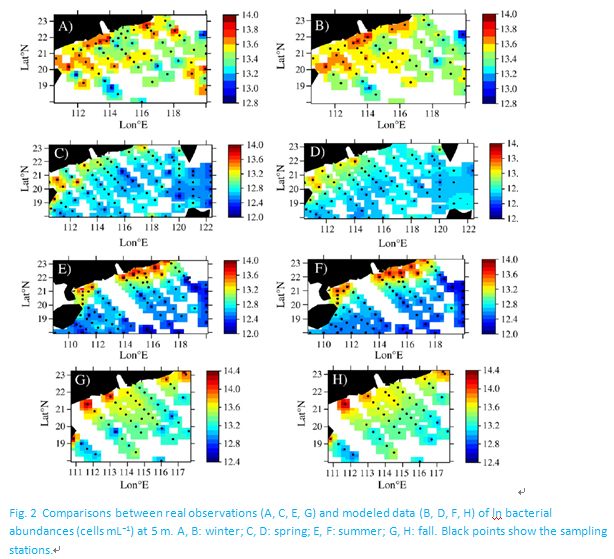Chen BZ, HB Liu, BQ Huang.Journal of Sea Research,2012.72: 69-76.
We modeled the abundance distribution of heterotrophic bacteria collected from 4 cruises in the northern South China Sea using generalized additive models to infer the underlying mechanisms controlling bacterial abundance and to predict bacterial abundance using environmental parameters that can be easily obtained. We incorporated spatial coordinates, depth, month, chlorophyll (Chl) a concentration, temperature, salinity, nutricline and mixed layer depth in the model, which captures the main features of the observations and explains 88% of the total variation of bacterial abundance. The most important factor affecting bacterial abundance is chlorophyll, followed by salinity and nutricline depth, reflecting the importance of carbon and nutrient sources to bacteria. Bacterial abundance shows a unimodal relationship with temperature and decreases with depth. All the functions are nonlinear. After controlling environmental parameters, bacterial abundances are higher in fall and winter than in spring and summer and usually show an onshore–offshore decreasing gradient, which probably signify transportation pathways of terrestrial organic matter to the sea via atmospheric deposition. Comparisons of variograms between raw data and residuals of the model show that positive autocorrelation at small scales is induced by both environmental similarity and geographic proximity, while the negative autocorrelation at large scales is mostly contributed by environmental similarity in remote water masses.


